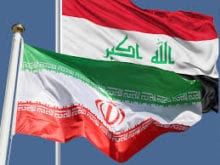Radiofarda – The retaliatory action Iranian leaderss had promised after the United States killed Qassem Soleimani, was launched early Wednesday January 8: A missile attack against Ain Al-Asad, a U.S. military base in Western Iraq.
So far, not only there is no news of any U.S. casualty, but U.S. President Donald Trump who said in a tweet that “All is well,” talked about “embracing peace” in his post-mortem speech in the wake of the strike, while also threatening to further tighten the sanctions against Tehran.
In the meantime, the comment by Iran’s Foreign Minister Javad Zarif who said “Iran is not after escalating tensions,” has given rise to the assumption that both sides are possibly thinking of controlling the situation and do not wish to continue direct military confrontation at this time.
However, the stability of the current situation depends on the next decisions and actions by Iran and America and how they perceive each other’s moves.
After several days of mourning for Soleimani, most regional players and analysts anticipated Iran’s retaliatory reaction. Comments by Supreme Leader Ali Khamenei and senior IRGC commanders gave further rise to expectations among the supporters of the Islamic Republic.SEE ALSO:Khamenei Claims Victory After Attack, Says US ‘Was Slapped In The Face’
If Tehran did not react, this would have led to despair and frustration among its supporters, but if it over-reacted with a massive revenge larger in scale than the strike on Ain Al-Asad, it was likely to receive heavier blows from the U.S. forces as Trump had vowed.
At the time being, based on evidence, Iran and the United States are more likely to move toward controlling the tensions and refraining from further strikes against each other; and less likely to start an all-out war.
Iran and the united States came face to face in a “limited case-based conflict” following the death of a U.S. contractor during an attack on a U.S. base in Kirkuk followed by U.S. retaliatory airstrike against the Iraqi Popular Mobilization militia and the militia’s counter-attack on the U.S. embassy in Baghdad, and most importantly, the killing of Qassem Soleimani in a U.S. drone attack in Baghdad.
Now, with the killing “avenged” by Iran’s missile attack they are likely to return to another period of tension and war of words.
Unofficially, both sides see the current situation as a 1-1 tie. They will stop limited, case-based conflicts and will resume the war of words rather than engage in more widespread operations or an all-out war.
Clearly losing Qassem Soleimani and pro-Iran Militia leader Abu Mahdi al-Muhandes is militarily and politically a much more serious blow than the attack on Ain Al-Asad. However, the Islamic Republic is telling its supporters in Iran and the region that it has given a hard blow to the U.S. and undermined its military might and prestige.
However, this perception does not conform to reality and Iran is overtly magnifying its action. An attack by a sovereign nation on a U.S. military base has been rare after the Viet Nam War. But Iran’s attack has been carried out in a way to simply save Tehran’s face in front of its supporters who have been overwhelmed by the killing of Soleimani.SEE ALSO:Trump Says Iran ‘Appears To Be Standing Down’ After Missile Attack
Although Iran’s state-controlled media may portray it as a big strike on America, but the reality on the ground does not confirm this. After all no American or Iraqi personnel were killed or injured with limited material damage to the base.
This outcome has given rise to the perception on social media as if Iran and the United States coordinated the timing and other details of the attack beforehand to prevent escalation. According to Zarif, Iran informed the Iraqi government before the attack. The Iraqi government has in turn informed the U.S. and as a result, Ain Al-Asad was vacant at the time of the attack.
The limited attack cannot be equated with the killing of Khamenei’s most important commander and military aide. Soleimani was the Islamic Republic’s number one player in the Middle East and in the challenge against U.S., Saudi Arabia and Israel. So, the current stage of game has ended with a high advantage for the United States.
Having seen the type and seriousness of Iran’s missile attack and the United States’ reaction to it, it appears that the danger of Iran-U.S. tensions escalating into a regional war has been reduced in the short-run.
However, this does not mean an end to tensions. Both sides have the potential to return to direct military confrontation instantaneously. But if this controlled situation lingers long enough, this would mean that both sides are not after starting a war, as senior officials on both sides have indicated.
- Morad VeisiMorad Veisi is a journalist and an editor at Radio Farda and is considered an expert in affairs related to Iran’s IRGC and the Supreme Leader ayatollah Ali Khamenei.
 Shabtabnews In this dark night, I have lost my way – Arise from a corner, oh you the star of guidance.
Shabtabnews In this dark night, I have lost my way – Arise from a corner, oh you the star of guidance.


